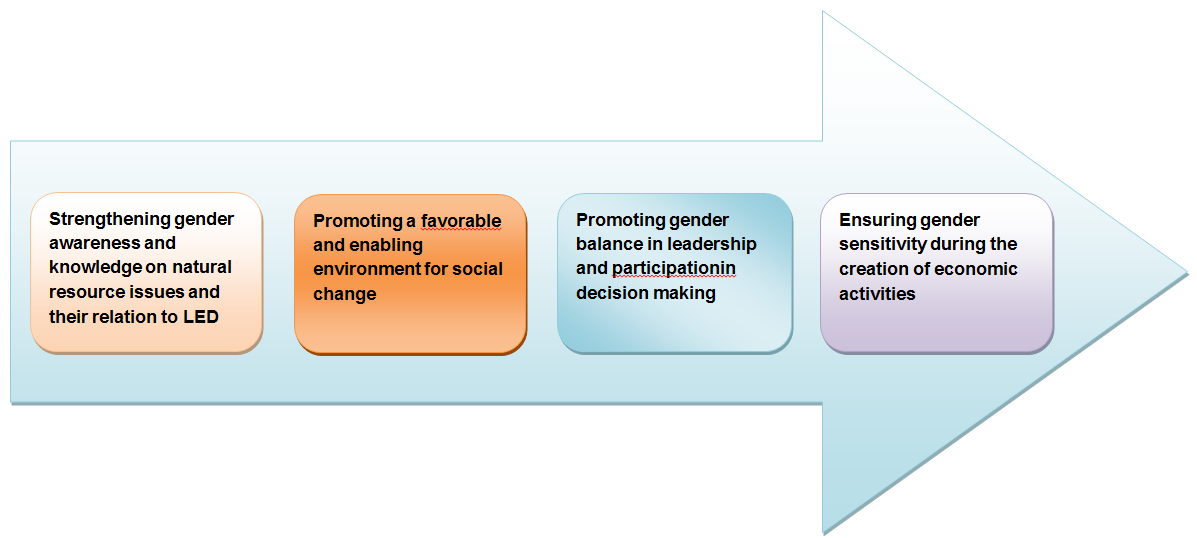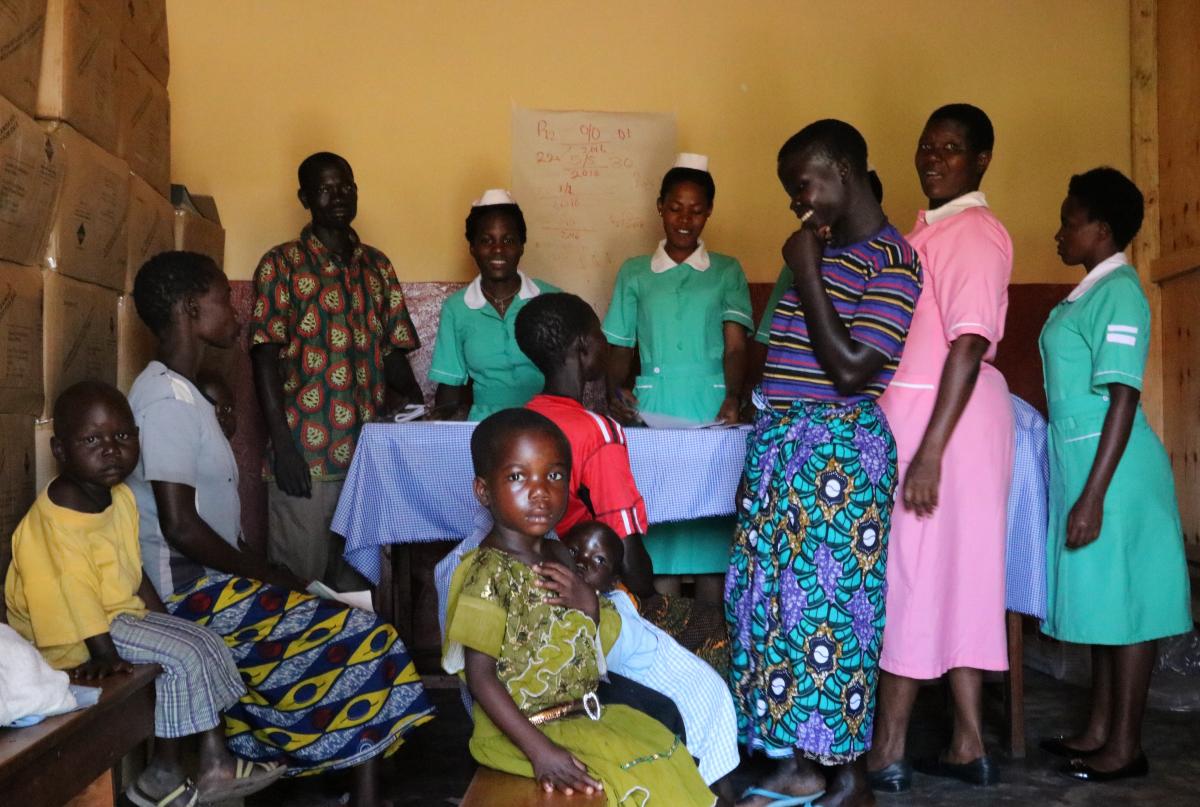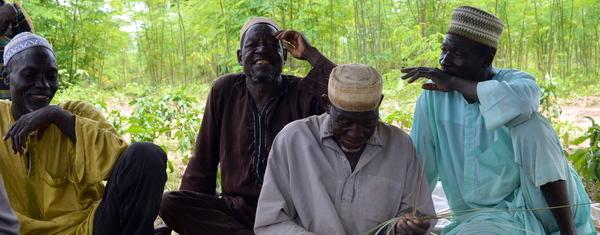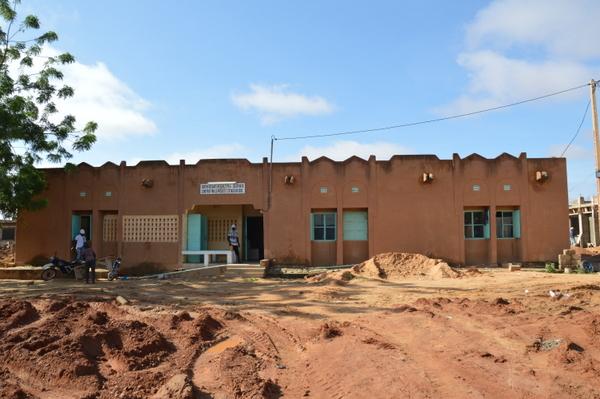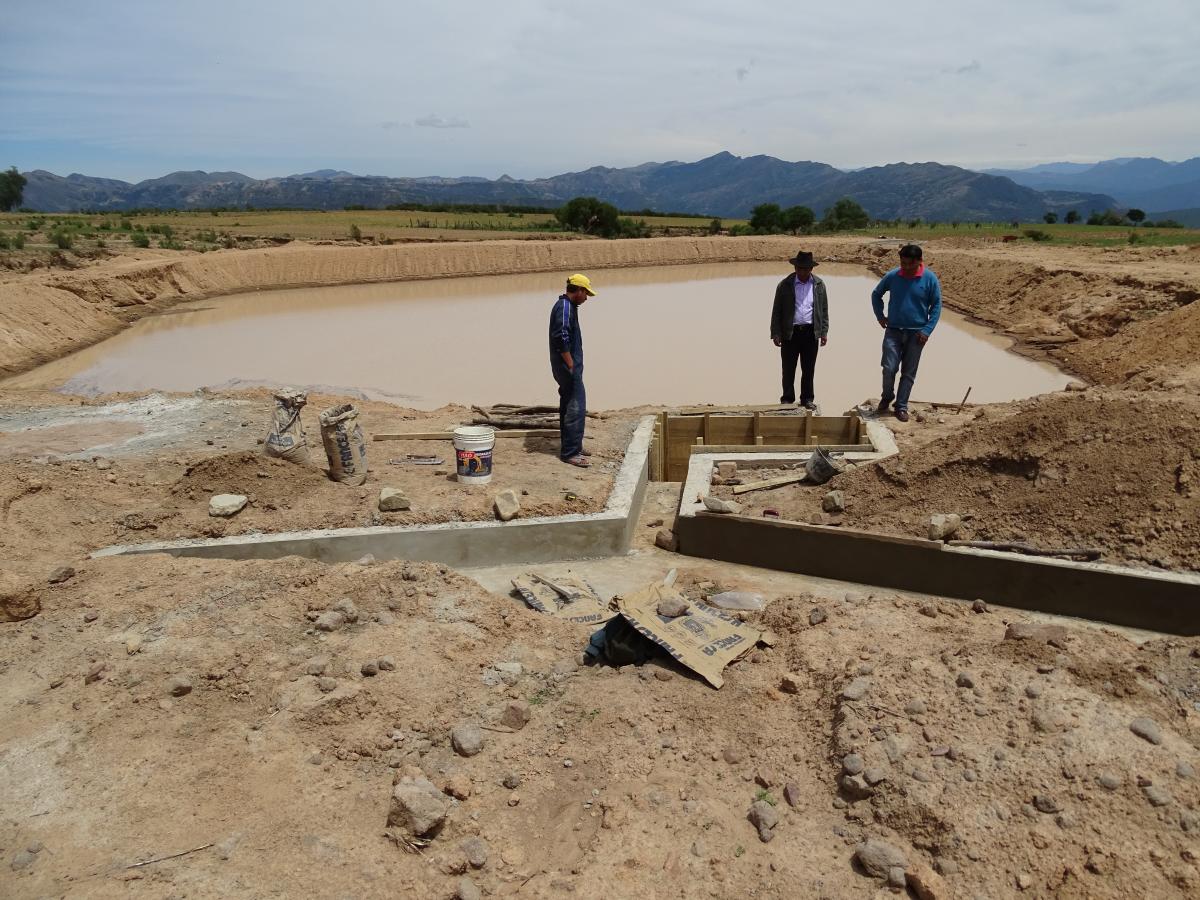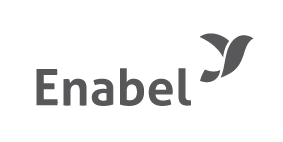Search
Viewing 2370 to 2385 of 2520 news
-
Gender Mainstreaming Strategy
Jennifer SWERTVAEGHER | 15/09/2016
A commitment to gender equality in NRM4LED has been a priority since the formulation of the project. It is clearly stated in the Technical and Financial File of the project that gender will be integrated in all four results of the project. In order to achieve this, a Technical Advisor on Gender and Governance was employed for the duration of the project. Moreover, the project budget was developed using a Gender Budget Scan (GBS) which allows for a gender-specific analysis of the budget and the inclusion of the gender approach as a tool for monitoring in the design, planning, implementation, follow-up and evaluation of the project.The Gender Mainstreaming Strategy has been finalized this September. Through this strategy, gender equality will be promoted by NRM4LED by improving gender participation in decision making, improving gender equitable governance and access to/control over land, and ensuring gender equitable local economic development in the project area by 2019.The specific objectives of the Strategy are:To identify, analyse and address the major issues of concern to gender equality in NRM4LEDTo provide guidance on gender sensitive implementation of the project interventions which will ensure equitable benefits to men and womenTo ensure the incorporation of gender aspects in the design, implementation, monitoring and reporting of all project related activitiesTo ensure that gender specific change drivers identified in the NRM4LED Theory of Change are adequately taken care of during the development of annual action plans and budgets
-
Increasing access to health care with “performance-based financing”
Thea MATHUES | 08/09/2016
BTC’s Private-Not-For-Profit project assists faith based health facilities in delivering the best possible healthcare services for their patients. To bring Uganda one step closer to universal healthcare coverage, a new system of performance-based financing is introduced. A system that rewards the outputs instead of funding the inputs of the health facilities. Good performing hospitals and health centers will receive financial support to be used with more autonomy. One of the regions where BTC is helping to set up performance-based financing (PBF) is the West Nile region. It lies in the north-west of Uganda bordering the Democratic Republic of Congo and South-Sudan. Many people fleeing conflicts or difficult economic situations in these countries are looking for medical treatment in a region that is yet to fully recover from the violent conflict between Joseph Kony’s Lord’s Resistance Army (LRA) and the Ugandan government. In 2006 a truce between both parties was signed. Since then improvement in poverty reduction has been made but according to the Ugandan Poverty Status Report of 2014 the Northern part of Uganda remains the poorest of the country. Here health service providers are trying to deliver quality healthcare to an often very poor population. Our Private-Not-For-Profit project (PNFP) assists through Ugandan ministry of health the private-not-for-profit health facilities with capacity building in quality improvement initiatives, leadership and management. Flipping the old logic Traditionally funding for health has been directed towards inputs like salaries, construction, training and equipment. People thought that improved healthcare would follow but this hasn’t always been the case. The new system of performance-based financing flips the old logic around and focuses on improved performance. Health facilities receive quarterly incentive for initiatives that are taken to implement the quality standards defined by the Ministry of Health. They are also rewarded for quantitative performance targets like “number of child malnutrition correctly treated’, ‘number of fully immunized children’ or ‘number of deliveries well managed’. The quantity and quality of delivered health services will be verified on a quarterly basis. Reducing the patient's bill In the performance contracts signed between the health facilities and the Local Government, the subsidies granted for achieving these quantitative performance targets are linked to reducing the patient’s bill. Currently user fees contribute to 50 to 60% of the total income of the health facilities, this is too high. According to World Health Organization recommendations, not more than 20% of the cost of the health services should be covered by user fees. 13 of the facilities (4 hospitals and 9 health centers) in the West Nile region have been selected to start with performance-based financing. By turning away from centering attention on inputs, RBF aims to improve both health system effectiveness and efficiency. Health providers at a district level are free to use the grants to implement their own work plan. Local decision making power Managers, doctors and nurses can set their own priorities according to the needs on the ground and will receive the spending autonomy to back their choices up. They will gain more decision making power, and become responsible for their own performance. This shift from a centralized budget to more local decision making power is an important reform that BTC, together with the Ugandan government, is helping become a reality. This is just the beginning of a challenging but exciting process. Two other east-African countries, Rwanda and Burundi already introduced a system of performance-based financing with promising results to show for. To give two examples: according to the Africa health forum of 2013 post-natal care visits in Burundi have gone up and the overall quality of care in health facilities using PBF has increased in Rwanda. With the Ugandan government, the ministry of health and the local PNFP partners on board, BTC believes that performance-based financing could be a real game changer for the health sector in Uganda.
-
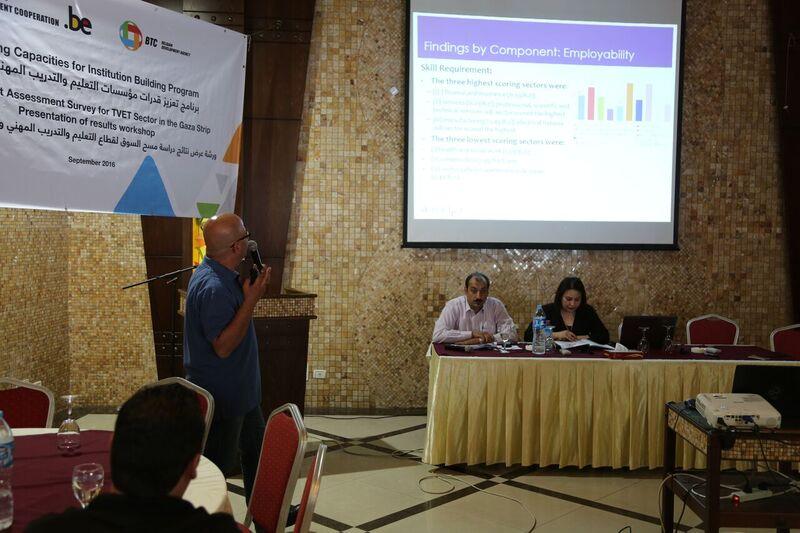
Labour Market Needs Survey in Gaza
Eva MORRE | 08/09/2016
The Belgian Development Agency (BTC) has conducted a Labour Market Needs Survey for the technical and vocational education and training (TVET) Sector in the Gaza Strip. The survey is done in the framework of its ECIB-Work Based Learning (WBL) programme. On the 1st of September BTC conducted a workshop for its stakeholders to present the results of this first labour market survey for the TVET sector in the Gaza Strip. The study was conducted by a local consultancy company “Al Athar” as part of the design and implementation process of the Work Based Learning (WBL) initiatives. It was done in partnership with TVET institutions and the Private Sector in order to expand youth employment and entrepreneurship opportunities in the Gaza Strip. The assessment is considered a necessary step to ensure that the WBL initiatives are based on the real needs of the local labour market for skilled workers and at the same time meets the aspirations of the Gazan youth. The focus of the study is to identify the most promising economic sectors related to TVET. This will enable TVET partners to start or upgrade new vocations that will meet the labour market needs and priorities better. BTC believes that the success of employability programs depends for a great deal on correctly identifying and responding to the unique conditions of the local labour market in each targeted region, and tailoring those programs to the specific assets and needs of local youth. The ECIB program works closely together with the private sector in a real Private Public Partnership. This partnership creates an added value for employers who will be more likely to hire and retain properly skilled TVET graduates and become long-term partners in training and support efforts. For those TVET graduates who aspire to start their own businesses, this study is of vital importance to make the right choice of vocation and develop realistic business plans. The survey shows that the most promising economic sectors for TVET employment and entrepreneurship in the current business environment in the Gaza Strip are services, agriculture, fishery and ICT. The survey also gives more details about the different subsectors and the specific type and degree of skills that are needed. The survey equally focusses on specific gender topics and how to increase the participation of women in the labour market. The survey is highly appreciated by all stakeholders as it will enable them to design their interventions based on real labour market needs. You can find the study here.
-
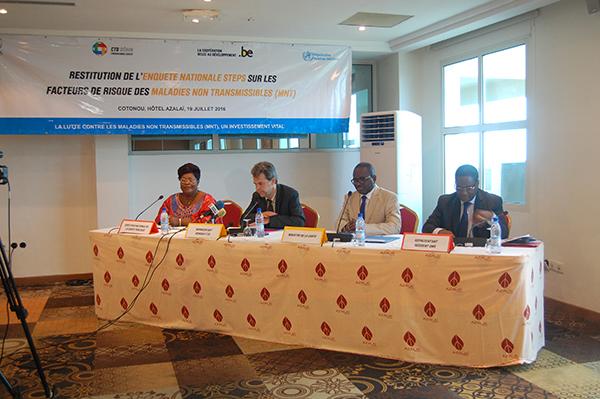
Restitution de l’enquête sur les Maladies Non transmissibles au Bénin : 98% de la population adulte à risque
Bellya SEKPON | 07/09/2016
L’hôtel Azalaï de Cotonou a servi de cadre à la cérémonie de restitution de l’enquête nationale STEPS sur les Maladies Non Transmissibles au Bénin, enquête menée d’octobre à décembre 2015, par le Programme National de Lutte contre les Maladies Non Transmissibles (PNLMNT), structure du Ministère de la Santé, avec l’appui financier et technique de l’Agence belge de développement (CTB) et l’Organisation Mondiale de la Santé (OMS). L'enquête STEPS du Bénin est une enquête portant sur la population générale, ciblant les adultes âgés de 18 à 69 ans. Un total de 5127 adultes a participé à l'enquête dont 54,6% de femmes. Le taux de réponse global a été de 98,6%. Les quatre principaux types de maladies non transmissibles sont les maladies cardiovasculaires (accidents vasculaires cardiaques ou cérébraux), les cancers, les maladies respiratoires chroniques (comme la broncho-pneumopathie chronique obstructive ou l’asthme) et le diabète. Selon le Représentant Résident de l’Agence belge de développement (CTB), « Bien plus qu’un problème de santé publique, l’ampleur des Maladies Non Transmissibles ces dernières années constitue une problématique de développement. C’est pourquoi la Coopération Belge, a décidé de soutenir l’état béninois dans la lutte contre les Maladies Non Transmissibles, en offrant un appui financier de plus de Soixante-treize millions de francs CFA pour la réalisation de la deuxième enquête nationale STEPS sur les facteurs de risques des maladies chroniques non transmissibles. » Les résultats révélés par l’enquête sur le plan national sont alarmants. Ainsi, il ressort de l’enquête que 98% de la population adulte du Bénin présente un risque de contracter une maladie non transmissible. Plus de 71% des adultes ne pratiquent aucune activité physique modérée et régulière. La situation est plus criarde chez les femmes que chez les hommes. En effet, plus de 85% des femmes ne pratiquent pas d’activité physique modérée tandis que 56,5% des hommes sont concernés. Plus de 23 % des adultes sont en surpoids et 7,4 % sont carrément obèses. La surcharge pondérale et le surpoids sont plus criards chez les femmes que chez les hommes. 25% des adultes présentent une tension artérielle élevée, et 96 % d’entre eux ne suivent aucun traitement. En ce qui concerne la consommation de fruits et légumes, l’une des mesures importantes pour la prévention des maladies non transmissibles, on note que plus de 93% d’adultes consomment moins de 5 portions de fruits et légumes par jour, ce qui est la norme. Dans les départements spécifiques couverts par l’Agence belge de développement (CTB), en l’occurrence la Donga, le Mono et le Couffo, il a été démontré que ceux qui fument, consomment abusivement de l’alcool ou sont inactifs sont très exposés à développer l’une ou l’autre ou plusieurs des maladies non transmissibles. Dans le département de la Donga, l’obésité abdominale touche 1 femme sur trois et est presque 8 à 9 fois plus élevée chez la femme que chez l’homme. Ces résultats donnent à réfléchir et doivent inciter à l’action. Comme l’a déclaré le Directeur de Cabinet du Ministre de la santé, « l’enquête STEPS est un instrument indispensable de prise de décision pour une amélioration des interventions à tous les niveaux de la pyramide sanitaire de notre pays aussi bien dans le public que dans le privé ». Abondant dans le même sens, Dr Eléonore GANDJETO, Directrice Nationale de la Santé Publique a déclaré : « Nous devons tout mettre en œuvre pour que le béninois sache ce qu’il faut faire pour éviter les facteurs de risque des Maladies Non Transmissibles. Les populations doivent être informées des nouvelles données disponibles sur ces facteurs de risque afin de changer de comportement et de mode de vie ». Le Dr Pierre MPELE KILEBOU, Représentant Résident de l’OMS au Bénin en a profité pour annoncer la mise à disposition par son institution d’un important lot de matériels pour soutenir la prise en charge des Maladies Non Transmissibles (MNT) au Bénin. Les participants ont convenu que seule une réponse globale et intégrée, prenant en compte les communautés et tous les niveaux de soins, sera à même d’infléchir la tendance actuelle. Sa conception et sa mise en œuvre sont annoncées pour les tous prochains mois. Dans ce même cadre, il est proposé que 2017 soit une année de lutte contre les maladies non transmissibles, ce qui aura comme conséquence la mobilisation de toutes les énergies pour combattre ce fléaux qui tuent plus de 35 millions annuellement dans le monde. L’appel est donc lancé aux populations, aux autorités à divers niveaux, aux partenaires techniques et financiers afin qu’ils s’unissent dans la lutte contre les Maladies Non Transmissibles au Bénin.
-
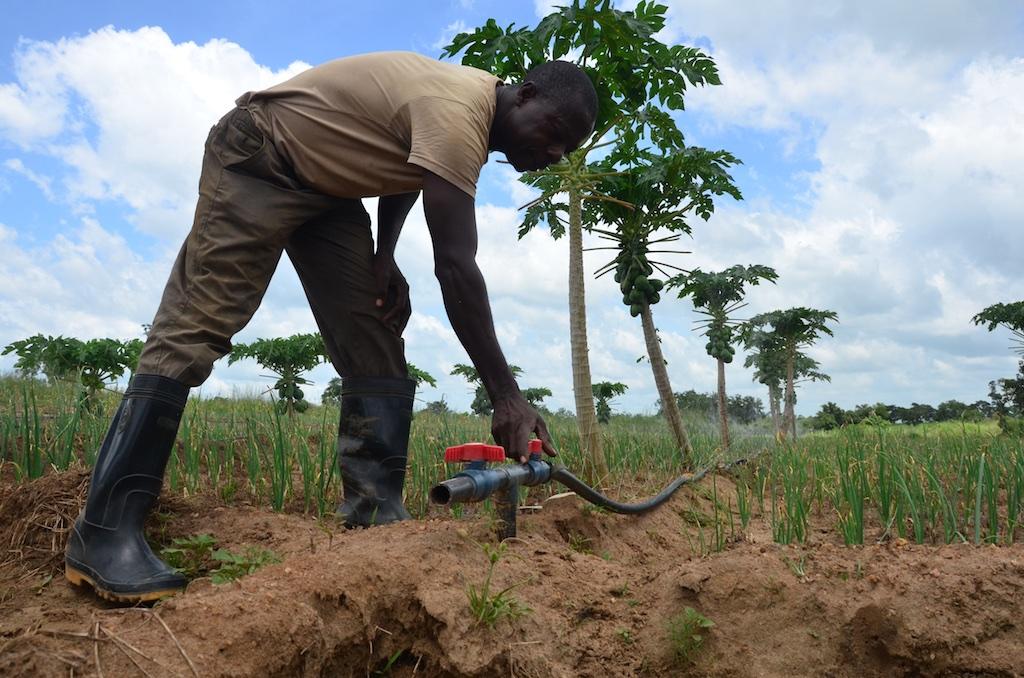
Vers l’élaboration d’une nouvelle stratégie de développement du secteur agricole au Bénin
Bellya SEKPON | 07/09/2016
Du 25 au 29 Juillet 2016 se sont tenus les travaux de relecture et de validation du rapport d’évaluation du Plan Stratégique de Relance du Secteur Agricole (PSRSA). Placé sous la présidence effective du Ministre en charge de l’Agriculture, ces travaux, ont été organisés avec l’appui du volet institutionnel du Programme d'Appui au développement des Filières Agricoles (PROFI). Ils ont enregistré la participation de diverses catégories d’acteurs clés de la mise en œuvre du PSRSA que sont le Ministère en charge de l’Agriculture, le Ministère de l’Economie et des Finances, le Ministère en charge du Plan et du Développement, les Partenaires Techniques et Financiers et les Acteurs Non Étatiques. A l’issue de ces travaux qui ont consisté en des échanges en plénière sur les communications animées par la Direction de la Planification et de la Prospective du MAEP et des travaux de groupe sur la version provisoire du rapport d’évaluation produite par la Direction du Plan et de la Prospective/MAEP, le draft du document d’évaluation du PSRSA a été amendé et validé par l’ensemble des participants. Cette version du rapport d’évaluation du PSRSA a ensuite fait l’objet d’un travail de finalisation par le comité technique en charge de l’évaluation et de l’actualisation du PSRSA, du 16 au 19 Août 2016 à Bohicon avec l’appui de la Société Nationale pour la Promotion Agricole (SONAPRA). La finalisation du rapport d’évaluation du PSRSA ouvre la voie à l’élaboration du nouveau cadre stratégique de développement du secteur agricole qui sera arrimé aux orientations contenues dans les Plans Régionaux et Nationaux d’investissements agricoles (PRIA/PNIA) de deuxième génération, à la politique agricole de la Communauté Economique des Etats de l'Afrique de l'Ouest (CEDEAO) et aux Objectifs du développement Durable (ODD). Article rédigé par Romuald Quenum (Point Focal Communication AIMAEP)
-
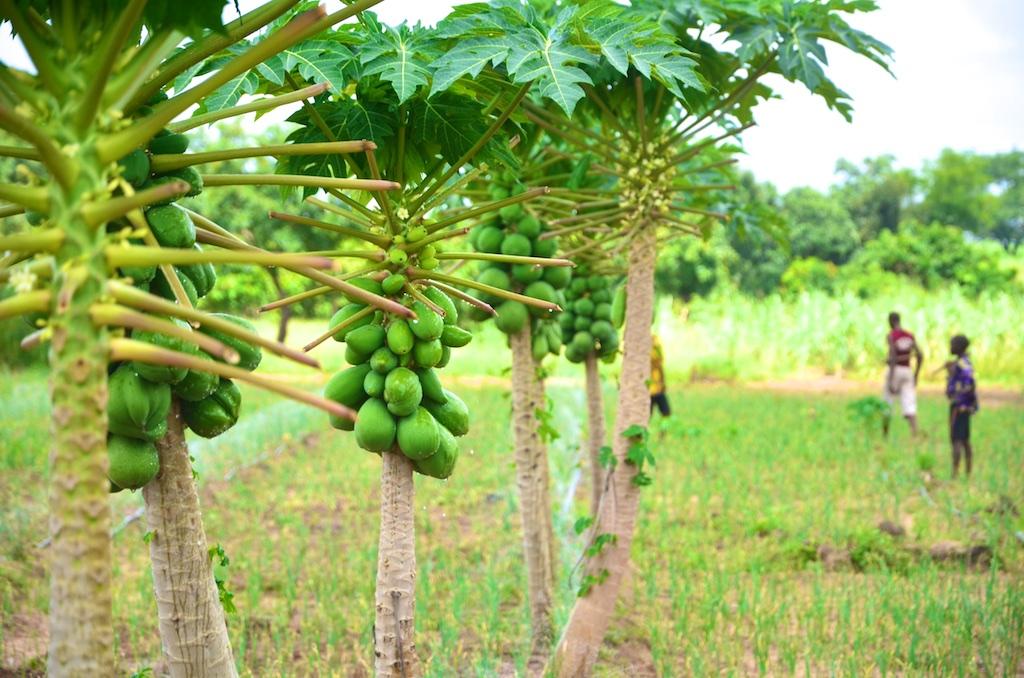
Les Chambres d’Agriculture du Bénin enfin régies par une Loi !
Bellya SEKPON | 07/09/2016
Le parcours fut laborieux et les efforts consentis furent énormes tant sur le plan humain, matériel que financier. Mais le résultat obtenu vient largement couronner les investissements réalisés. Depuis le 07 Juillet 2016, les Chambres d’Agriculture du Bénin issues des anciennes chambres d’agriculture et d’industrie du Bénin viennent enfin de se doter d’une Loi à l’image de leur sœur du Commerce. Ce texte très important pour les Chambres, qui vient renforcer leur légitimité et leur crédibilité de même que leur statut d’utilité publique, a été voté à l’unanimité par les députés de notre Assemblée Nationale lors de la dernière session ordinaire parlementaire. Le vote de la loi des Chambres d’Agriculture vient combler un grand vide puisque depuis leur scission en 1989 avec la Chambre de Commerce et d’Industrie, les Chambres d’Agriculture n’étaient régies que par un décret. Par ailleurs, en tant que membre du Réseau Ouest Africain des Chambres d’Agriculture, celle du Bénin était la seule à ne pas être régie par une loi. On peut donc dire que « justice est finalement rendue » à ces structures. Toutefois, cette loi ne constitue pas une fin en soi. La chambre d’agriculture doit redoubler d’efforts pour rapidement faire prendre les décrets d’application de la loi en vue d’une bonne appropriation de ces nouveaux textes, mais aussi mieux jouer son rôle d’interlocuteur du monde agricole afin de mieux se positionner sur l’échiquier institutionnel national. Article rédigé par Romuald Quenum (Point Focal Communication AIMAEP)
-
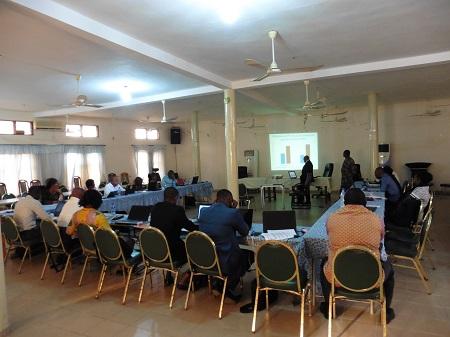
Structures de santé du Mono-Couffo : évaluation à mi-parcours du plan annuel et revue du Financement Basé sur les Résultats
Bellya SEKPON | 07/09/2016
Du 27 au 29 juillet, tous les responsables sanitaires des départements du Mono et du Couffo (Sud bénin) se sont réunis à Grand-Popo pour l’atelier de revue du Financement Basé sur les Résultats (FBR) et l’évaluation à mi-parcours du Plan Intégré de Travail Annuel (PITA). Ce fut donc l’occasion d’analyser et de commenter les performances des 6 derniers mois pour chaque structure sanitaire. Cet atelier, d’une grande importance, avait également pour but d’actualiser le PITA pour la seconde partie de 2016. En ce début de second semestre 2016, il est important que tous les partenaires se retrouvent afin de faire le point sur la première partie de l’année 2016, d’en tirer des leçons et d’adapter son programme pour la suite de l’année si nécessaire. Cet atelier de trois jours, appuyé techniquement et financièrement par le Programme d'Appui au Secteur de la Santé (PASS Sourou), est donc crucial pour la coordination et l’intégration des différentes structures sanitaires du Mono-Couffo. Le premier jour de cet atelier s’est concentré sur le PITA 2016 et sur l’exécution des différentes activités prévues. Force a été de constater que plusieurs activités planifiées n’ont pu être menées et que plusieurs indicateurs sanitaires sont en baisse par rapport à la même période en 2015. Cela peut notamment s’expliquer par la période électorale, connue par le Bénin en début 2016, qui a impacté la bonne tenue desdites activités. Cela étant, tout le monde s’est engagé à redoubler d’efforts au second semestre afin d’atteindre nos objectifs communs. Le PITA 2016 a ainsi été actualisé par chaque structure sanitaire. Le second jour a été consacré à une revue du Financement Basé sur les Résultats (FBR) au niveau départemental afin de présenter les performances 2016, les défis à relever et les solutions d’amélioration possibles. Dans l’ensemble, les résultats issus des évaluations FBR sont positifs et tendent vers l’amélioration. Par ailleurs, les nouvelles grilles d’évaluation FBR harmonisées dans le cadre du processus engagés au niveau national avec le gouvernement béninois et différents Partenaires Techniques et Financiers (PASS Sourou, Banque Mondiale, Fonds Mondial et Gavi) ont été présentés aux participants de l’atelier. Cela afin que tous les acteurs concernés par les nouvelles grilles puissent s’y familiariser et s’organiser en vue des prochaines évaluations. Enfin, le troisième jour de l’atelier s’est concentré sur des activités de suivi-évaluation à mener dans le cadre du PASS Sourou. En effet, l’occasion a été saisie pour finaliser les indicateurs agrégés du PASS Sourou avec les partenaires et de réaliser l’auto-évaluation du journal de changements de la Direction Départementale de la Santé. On peut donc dire sans hésiter que ces trois jours d’atelier furent chargés et particulièrement productifs pour les structures sanitaires du Mono-Couffo.Article rédigé par Raphaël Maldague (Point Focal Communication PASS Sourou)
-
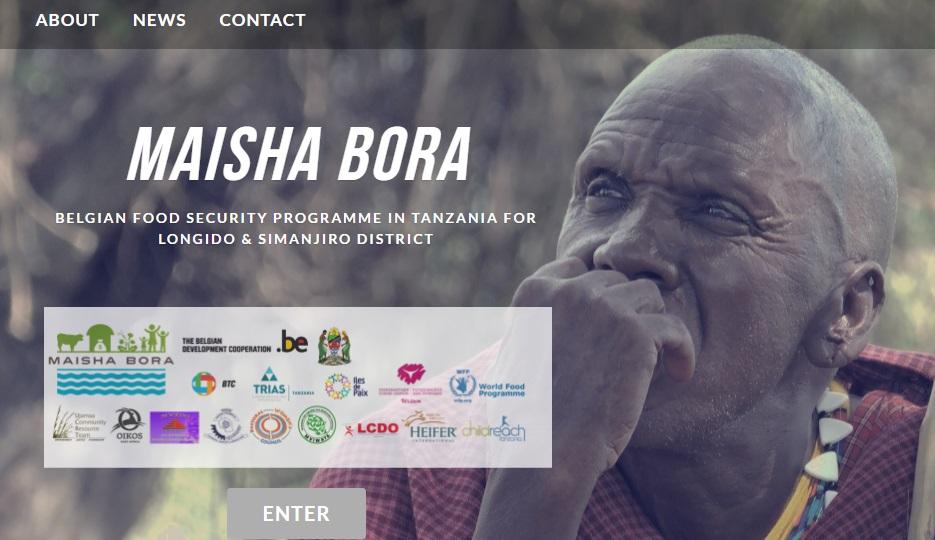
Launching our website: www.maishabora-tz.org
Toon DRIESEN | 05/09/2016
We proudly present you the website of our Maisha Bora programme. On www.maishabora-tz.org you’ll find information on our Food Security programme in Longido and Simanjiro District and all the latest news from our partners. You’ll also find a link to sign up for our Maisha Bora News Digest, a two monthly newsletter delivering the most important updates on Maisha Bora to your inbox.Want to get in touch with us? Fill-in the contact form on our website and we'll get back to you as soon as possible.
-
Un savoir-faire pour un changement de comportement
Stephanie EECKMAN | 02/09/2016
Au milieu des vastes étendues de champs de mil qui tapissent la région de Dosso, apparait un coin de verdure: le site maraicher de Tounga Hassada. En effet, la région de Dosso est aride, mais dispose d'un important potentiel d'irrigation: la nappe phréatique des vallées fossiles des dallols est peu profonde. Pourtant, plusieurs contraintes d'exploitation sont difficiles à surmonter pour les producteurs Dossolais: le captage et la distribution de l'eau dans les parcelles, le faible accès aux intrants agricoles et la maitrise partielle des techniques de production et d’irrigation. Cette précarité débouche une pauvreté généralisée et une insécurité alimentaire chronique. En effet, la proportion de personnes en insécurité alimentaire peut atteindre jusqu’à 80%. Face à cette situation, le Programme d’Appui à la Mise en Place des Entités Décentralisés dans la Région de Dosso, Phase 2 (PAMED2) s’est mobilisé et à ciblé plus de 625.136 personnes parmi les plus vulnérables. L’objectif du PAMED2 est de contribuer à la sécurité alimentaire en renforçant la gouvernance locale dans un contexte de jeune décentralisation. En effet, la mise en œuvre du programme repose sur une responsabilisation des communes dans leur rôle de coordinateur du développement local et de fournisseur de services publics de proximité. Ce sont les communes qui définissent les projets de terrain à financer, qui en assument la maîtrise d’ouvrage et qui sont chargées de leur bonne utilisation. Le cas des sites maraîchers dans la commune de Douméga illustrent que des paysans pauvres peuvent accroître leur potentiel de productivité quand de bonnes politiques et pratiques sont mises en place. En effet, le maraichage joue un rôle important sur la sécurité alimentaire et nutritionnelle de la commune depuis 2012. Avec l’appui du PAMED2, elle investit dans l’aménagement des terres agricoles au profit des couches vulnérables (puits cimentés, clôture en grillage, motopompes,…). Bien que le maraîchage n’est pas exceptionnel au Niger, le fait que les maraichers à Douméga prévoient de continuer leur activité durant la saison des pluies (juin à septembre) l’est certainement, car la majorité des producteurs nigériens abandonnent le maraichage pour se concentrer essentiellement sur la culture du mil. Cet exemple d’accès à long terme à la terre sur ces sites, marque la volonté des propriétaires fonciers et des chefs de village; soucieux du bien-être de leurs communautés. « Ici, on a montré aux propriétaires des terres qu’en pratiquant les cultures de contre-saison durant la campagne pluvieuse, ils pouvaient augmenter considérablement leurs propres revenus agricoles. Cette pratique a permis de convaincre certains propriétaires fonciers d’accepter à faire une donation de terres destinées à l’aménagement au profit des vulnérables. Ces propriétaires fonciers terriens volontaires ont bénéficié d’appuis en intrants et en petits matériels agricoles afin d’essayer de pratiquer les cultures maraîchères en saison des pluies. Dans ce cas, les propriétaires restent eux-mêmes installés sur une partie du site aménagé et bénéficient donc du même encadrement fourni aux maraîchers par le PAMED2. », nous explique Oumarou Chérif, maire de Douméga. « Changer soi-même peut être difficile, mais inculquer le changement aux autres est un véritable défi. Le savoir seul ne suffit pas : la formation, les bonnes pratiques doivent être adoptées localement et démontrer leurs avantages tangibles. Le savoir convaincu par l’exemple sont les meilleurs arguments pour que les paysans transforment le savoir en initiatives concrètes». Pour Oumarou Emana, secrétaire général du site de Tounga Hassada, la pratique de culture de contre saison est une activité génératrice de revenus. « Je fais le maraîchage depuis l’installation de ce site. Je cultive de la salade, des tomates, des poivrons, des oignions et des pastèques. Mais c’est surtout la pastèque qui rapporte l’essentiel de nos revenus. Par récolte, cela peut nous rapporter 60.000 à 100.000FCFA par personne. Les ressources tirées de cette activité permettent de financer les études de nos enfants; d’acheter des animaux pour faire l’embouche, de satisfaire les besoins quotidiens : de manger, de se soigner en cas de maladie et d’aider certains membres de la famille » L’assimilation du savoir se fait par l’appropriation. Savoir, c’est pouvoir. Le savoir est donc capital pour susciter le changement. Cependant, ce n’est que lorsque tous les acteurs concernés – l’exécutif communal, les agents des services techniques, les chefs coutumiers, les producteurs/productrices et les propriétaires des terres privées- deviennent acteurs du changement que ce dernier s’opère réellement. C’est pourquoi ils doivent tous s’approprier les compétences et bonnes pratiques. Avant tout, les formations et bonnes pratiques doivent répondre à de réels besoins. Les communes sont bien placées pour définir les besoins de formation et les communiquer, mais l’implication de tous les acteurs dans la dissémination est un atout pour l’appropriation mais aussi pour la diffusion à grande échelle et à bas cout. La réussite à Douméga tient à la capacité de la mairie à réunir tous les acteurs autour de décisions prises en commun, mais également à la pertinence de ses interventions et leur adoption par les propriétaires des terres et des producteurs. «L'expérience de notre commune en matière de promotion des filières agricoles sera capitalisée à travers des visites de terrain. Cela permettra de sensibiliser les autres maires pour qu'ils appuient davantage le développement agricole en faisant des investissements qui rapportent aux communes et améliorent les revenus des producteurs, et donc le développement économique et social de la commune» nous dit Oumarou Chérif, démontrant ainsi sa volonté de soutenir ce changement auprès des autres communes dans la région. En comprenant les besoins partages par une grande partie de la population, il est possible de proposer des actions qui conviennent à tous et qui peuvent être répliquées. Cela apporte des économies d’échelle, réunit une communauté d’individus partageant une expérience collective et formant une masse critique d’ambassadeurs du projet. Enfin, cette approche rend plus visibles et comparables les changements apportés à la population, ce qui soutient également la dynamique de la redevabilité de la commune face à ses investissements communaux. C’est dans cette optique que, au mois de septembre, le PAMED2 organisera, en collaboration avec la Coordination Régionale de l’Initiative 3N, la Chambre Régionale d’Agriculture et la Direction Régionale de l’Agriculture, un voyage d’étude au profit des producteurs et propriétaires terriens des sites réalisés dans le cadre du Fonds de Développement Communal.
-
Vers l’implémentation du financement basé sur les résultats : une meilleure gestion des ressources humaines en santé
Stephanie EECKMAN | 01/09/2016
Dans sa volonté d’atteindre les Objectifs de Développement Durable, le Niger s’emploie à trouver des solutions concrètes pour corriger les indicateurs peu reluisants pour le secteur de la santé. L’un des objectifs du Ministère de la Santé Publique est d’améliorer la performance du système de santé nigérien à travers le financement basé sur les résultats (FBR). Le FBR est une approche axée sur les résultats du système de santé, définis comme la quantité et la qualité des services financièrement accessibles, produits et proposés aux populations par le biais d’un contrat de performance. En effet, une approche qui marque la rupture avec le financement classique du système de santé qui consistait à fournir les inputs sans atteindre nécessairement des résultats. L’effet recherché par cette approche est de renforcer le système de santé, le suivi et l’évaluation, et la performance du système de santé par l’augmentation de l’utilisation, la quantité et la qualité des services offerts. A travers les primes à la performance du personnel de santé, le FBR compte également créer la motivation nécessaire du personnel et ainsi assurer la qualité des prestations. Non seulement, le personnel recevra une prime sur le salaire basée sur la performance individuelle et collective, mais la qualité des prestations se reflètera aussi dans le montant global qu’une formation sanitaire recevra. Le FBR peut contribuer à une amélioration de la qualité mais il y a aussi d’autres mécanismes pour assurer la qualité des soins et la performance du personnel (voir plus loin). Le FBR a été expérimenté avec succès dans les pays à bas revenus comme le Cambodge en Asie dans les années 1990 et à partir des années 2000 dans les pays africains comme le Rwanda, la RDC, le Burundi, la RCA, le Bénin et le Cameroun. Le Ministère de la Santé du Niger quand à lui, a aussi entamé un projet pilote du FBR à Boboye (Dosso). « l’homme qu’il faut à la place qu’il faut » Les défis de l’implémentation du FBR au Niger se situent à différents niveaux, mais un des facteurs les plus importants concernent les ressources humaines. En effet, les ressources humaines en santé devront avoir une place de choix pour accompagner les réformes amorcées. L’audit organisationnel et fonctionnel du Ministère de la Santé Publique, réalisé en juin 2015, a fait ressortir la nécessité de généraliser l’outil des fiches d’emploi pour l’ensemble des agents du système. Il est alors évident que le pilotage du FBR implique des processus et outils de management et de développement des ressources humaines. En collaboration avec le Projet Appui Institutionnel (PAI-MSP), le Ministère a engagé depuis mai 2014, un processus d’élaboration des fiches de postes du personnel des différents niveaux de la pyramide sanitaire. Ces fiches de postes avec la description des activités et tâches individuelles permettront de responsabiliser les agents du niveau opérationnel à travers des objectifs clairs, base pour toute évaluation individuelle. En outre, ces fiches permettront aux décideurs de procéder à des affectations et à des nominations des agents en tenant compte de l’adéquation profil-poste, chose indispensable à une meilleure gestion du personnel de la santé en vue de garantir le bien-être des populations. De fait, avec l’appui du PAI-MSP, la Direction des Ressources Humaines a élaboré 136 fiches de postes validés pour les différents niveaux de la hiérarchie sanitaire. C’est-à-dire : 45 catégories de postes pour le personnel de l’Hôpital National, 21 catégories pour la Direction Régionale de la Santé Publique, 19 catégories pour le Centre de Santé de la Mère et de l’Enfant, 31 catégories pour le Centre Hospitalier Régional, 4 catégories pour les Districts Sanitaire, 14 catégories pour les Hôpitaux de District et 2 catégories pour les Centres de Santé Intégrés. Visant à rendre disponible un personnel compétent, motivé et suffisamment responsable dans tous les structures du pays, ces fiches feront l’objet de test dans la Région de Maradi et seront mis en application au sein des Hôpitaux de District de Gothèye, Gaya et Damagaram Takaya actuellement en construction à travers le Projet d’Appui au Renforcement du Système de Santé (PARSS).
-
Priorité aux patients : Améliorer l'accès à la santé dans les zones rurales du Niger
Stephanie EECKMAN | 01/09/2016
Le développement du secteur de la santé est un indicateur important du niveau de développement d’un pays, mais malgré des progrès certains réalisés depuis quelques années -notamment en santé féminine, pédiatrie et chirurgie- le secteur nigérien de la santé a toujours de grandes difficultés à faire face aux besoins de la population et à organiser l’offre de soins. L’accès aux services de santé de base reste limité. On estime que seuls 40 à 50% de la population ont accès aux services publics de santé, alors que 65% recourent de façon régulière aux guérisseurs traditionnels. Cette situation s’explique par la couverture géographique insuffisante des infrastructures sanitaires, des financements mal adaptés (alors que 48% de la population vit sous le seuil de pauvreté) et par le manque de personnel qualifié et de médicaments. Par ailleurs, certains services de haute spécialité, tels que la dialyse ou la chirurgie, ne sont pratiquement pas disponibles dans le pays. A travers le Projet d’Appui au Renforcement du Système de Santé (PARSS); la CTB Niger est en train de mettre en œuvre un projet de construction d’hôpital de grande envergure. La CTB Niger a été mandaté par la coopération belge afin d’assurer la gestion de la mise en œuvre de la construction de l’hôpital de district de Gothèye, en collaboration avec le Ministère de la Santé Publique. La situation du nouvel hôpital à Gothèye est telle qu’elle pourrait devenir un pôle de soins pour 5 districts sanitaires directement avoisinants dont la population se rend actuellement à l’hôpital de district de Téra, situé à une distance de 95 km, soit à l’hôpital national de Niamey (en traversant le fleuve). Grâce au financement de la Belgique, les populations de la région de Tillabéri et les régions avoisinants auront ainsi accès à un hôpital de référence de niveau périphérique, offrant une variété de services telles que les urgences, la pédiatrie, la médecine interne, la chirurgie, ainsi qu’un service de laboratoire et de radiologie. En plus de répondre à un besoin vital des populations de la région, les hôpitaux de district, comme ceux construits dans le cadre de cette intervention, renforcent le système de santé et augmentent la couverture sanitaire globale. Vu que le rôle de la CTB Niger consiste à gérer le projet -en s’assurant de la bonne conception des plans de l’hôpital, de la construction effective du bâtiment, de son équipement, de la mise en place d’un système de gestion pour l’hôpital, ainsi que de de renforcer les capacités de ses partenaires à tous les niveaux- plusieurs étapes clés ont été franchies cette année. Les principales réalisations consistent notamment dans les activités suivantes : l’élaboration d’un schéma directeur pour les hôpitaux ;le recrutement d’un bureau d’études chargé de la conception des plans d’architecture, de l’élaboration des dossiers d’appel d’offres pour la sélection des entreprises et du suivi et surveillance des travaux. Ceci pour les infrastructures et pour les équipements; le suivi et approbation étapes par étapes des études par l’unité de gestion du projet en partenariat avec le Ministère de la Santé Publique à travers la Direction des Infrastructures et Équipements Sanitaires; le lancement du processus d’appel d’offres pour le choix des entreprises ; les signatures des contrats des entreprises sélectionnées ; la remise des sites et lancement des travaux ; le démarrage des travaux La CTB Niger, continue à travailler en étroite collaboration avec le MSP afin d’exécuter des projets similaires. Ainsi, le PARSS mène également le processus de réalisation des travaux de deux autres hôpitaux de districts à Gaya et Damagaram Takaya, la réhabilitation de l’hôpital de district de Loga ainsi que la transformation de quinze cases de santé en Centre de Santé Intégrés. Chiffres clés : Opérationnalisation de l’hôpital de Gothèye : 2017Budget : 961.747.755 Fcfa pour les travaux d’infrastructuresSuperficie de l’infrastructure hospitalière : 1,68 hBénéficiaires estimés : 270.000 personnes Capacité d’accueil : 81 lits Personnel : environ 60 personnes (personnel médical et administratif minimum)
-
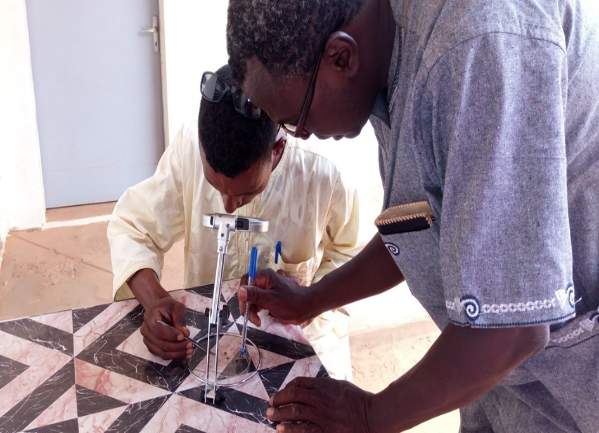
Des animaux sains, le gage de revenus stables
Stephanie EECKMAN | 30/08/2016
Au Niger, le bétail sain joue un rôle absolument fondamental. Mais pour maintenir un troupeau en bonne santé, formations et approvisionnement en médicaments sont indispensables. Mais avec la croissance du cheptel et la pression démographique, les soins vétérinaires sont souvent insuffisants pour garantir une santé optimale des animaux. Le pays ne compte que 126 vétérinaires pour une superficie de 1 267 000 km², soit 1 vétérinaire pour 10 000 km². Un problème de taille, auquel viennent s'ajouter la faible offre en médicaments vétérinaires et le manque d’opportunités de formations après l’obtention du diplôme de vétérinaire. Pourtant, une insuffisance de l’accès aux services de base en matière de santé animale constitue l’un des principaux facteurs de risque économique pour l’éleveur. De ce fait, il est un frein important au développement de l’élevage. Améliorer les services vétérinaires de proximité à travers la formation A travers le Projet d’Appui à la Production Pastorale (PAPAT), la CTB mène différentes actions pour renforcer les capacités des agents de terrain -des techniciens issus des Directions régionale, départementales et communales, ainsi que des Services Vétérinaires Privés de Proximité- pour assurer un service vétérinaire- adaptés aux normes régionales/internationales-dans la région de Tahoua. En effet, l’ensemble des services vétérinaires (fourniture d’intrants, service, conseil) ne peut être performant que s’il est accompagné de formation. Afin de renforcer les capacités de ces techniciens, et selon une démarche participative, un atelier d’identification des besoins de formations a été tenu. Il a impliqué les représentants départementaux de l’élevage de la région et, a permis de ressortir les besoins prioritaires en formation dans le domaine de la santé animale. Ainsi, les thèmes suivants ont été retenus comme prioritaires : i) petites chirurgies animales, ii) techniques de prélèvement, d’’emballage et d’expédition des échantillons au laboratoire, iii) techniques d’évaluation de la biomasse, iv) SIG, v) techniques d’identification des tiques et autres insectes, vi) Techniques d’amélioration de l’alimentation animale, vii) Conduite de l'aviculture villageoise, viii) Technique de communication et ix) Procédures de passation de marchés. Le choix de ces thèmes a tenu compte des besoins réels des agents ainsi que des engagements déjà pris par d’autres partenaires de développement pour la formation des agents d’élevage. Ainsi, une formation relative au thème « Les techniques d'identifications des tiques et autres insectes hématophages, les tests de diagnostiques des parasitoses sanguines.» a été organisé du 12 au 21 avril 2016 en 2 sessions de 5 jours chacune au profit de 37 techniciens venant de tous les départements de la région de Tahoua. Ils ont été instruits sur la biologie et l’écologie des tiques, l’exploitation de la clé d'identification des tiques, les diagnostics des maladies transmises par les tiques, les vecteurs de trypanosome et autres diptères hématophages, la trypanosomoses animales et la trypanotolerance, l’exploitation de la clé d'identification des diptères. Le Laboratoire Central de l’Elevage (LABOCEL), en charge du diagnostic des maladies animales, des recherches vétérinaires et d'enquêtes épidémiologiques au Niger, a assuré cette formation. Chaque module présenté a fait l’objet d’échanges entre les participants et le formateur, ce qui a permis de clarifier et d’approfondir tout aspect sombre du module en question. Et après la phase théorique, les apprenants ont mis en pratique les enseignements des deux jours précédents dans les locaux du LABOCEL de Tahoua. Le renforcement des capacités des agents d’élevage sur « Les techniques d'identifications des tiques et autres insectes hématophages, les tests de diagnostiques des parasitoses sanguines » permet aux agents de distinguer les différents tiques et insectes hématophages, de faire un pronostic précis sur les maladies (parasitoses) transmises par ces vecteurs, de maitriser les techniques d’échantillonnage (collecte, conservation et transmission des prélèvements) et de maitriser les maladies sur le terrain en terme de traitement et de contrôle afin de mieux maitriser les situations sanitaires. Poursuivre de telles formations sur d’autres thématiques est la réponse la plus efficace pour une remise à niveau complète des techniciens et auxiliaires d’élevage. En effet, ces agents vétérinaires constituent la cheville ouvrière du Ministère de l’Elevage et leur formation continue est indispensable pour la qualité des activités à mener, notamment d’assurer la protection du cheptel national et par conséquent, la productivité du cheptel, la sécurité sanitaire des aliments et les revenus des pasteurs.
-
El Programa de Apoyo al Riego Comunitario entrega 7 microsistemas de riego a las familias de Sillani, municipio de Presto
Wietse FRICKEL | 29/08/2016
Chuquisaca, 10 de agosto de 2016. El Miércoles 10 de agosto del año 2016 el Programa de Apoyo al Riego Comunitario (PARC) entregó 7 sistemas de riego familiar a la comunidad de Sillani en el municipio de Presto, cuya construcción demandó una inversión de 795 mil bolivianos, co-financiada por la donación del Reino de Bélgica y recursos locales del Gobierno Autónomo Municipal de Presto, a través del Ministerio de Medio Ambiente y Agua (MMAyA). Los sistemas de riego, 6 atajados y un microsistema de riego familiar, garantizan riego para 5 hectáreas, asegurando la productividad agrícola y la seguridad alimentaria de 11 familias. Atajados son reservorios grandes que almacenan agua de lluvia, con el objetivo de garantizar el riego del cultivo en época de sequía. Además, la comunidad contará con un Asistente Técnico que apoyará los regantes en el uso y mantenimiento de los atajados y mejorara su producción. En el acto de entrega, Orlando Espinoza, Director Nacional del programa PARC y representante del Ministerio de Medio Ambiente y Agua, agradeció al Reino de Bélgica y al Gobierno Autónomo Municipal de Presto que co-financiaron el proyecto.
-

Evaluation of trainings: Using the Kirkpatrick model
Jennifer SWERTVAEGHER | 29/08/2016
Evaluating trainings The general and specific objective of the BTC Scholarship Programme is to contribute to the institutional capacity development and the organizational strengthening of beneficiary government institutions in two sectors: Local Government Reform (LGR) and Natural Resources Management (NRM). To achieve these objectives, practical trainings about LGR and NRM are given in selected districts in the country. The project is approaching its end and most of the trainings have been conducted by now. In the last phase of the project, it’s very important to undertake a final evaluation of the impact of the trainings in the daily performance of these selected institutions. For this evaluation, specific follow-up tools have been created. The Kirkpatrick model has been used to improve these evaluation tools and to check whether the trainings are evaluated at all critical levels. The Kirkpatrick model The Kirkpatrick Model is a model for evaluating the effectiveness and impact of a training in order to improve the training. The model takes into consideration 4 levels of evaluation. Level 1: Reaction Level 2: Learning Level 3: Behaviour Level 4: Results On the first level, the reaction of trainees towards the training are being measured, mostly via a questionnaire or interview of the trainees after the training. On the second level, the level of actual learning of the participants is being measured. Has the knowledge, skills or attitudes of the trainees increased as a result of the training? One way of answering this questions is through the comparison of a pre- and post-test (testing the trainees before and after the training) for example. The third level measures changes on the job due to the training. Did the training influence how learners perform in their jobs? Do they apply the learned knowledge, skills and/or attitudes in their work? As many people as possible that could be in a position to notice changes in the work performance of the training participants should be interviewed at this stage. For example: Participant/ learner Supervisor/mentor People who the trainees deliver service too (customers/ community) Colleagues Observation on the job and review of documents produced by the training participant are also ways for finding this out. The fourth level measures to what degree the targeted outcomes of the organization occur as a result of the training. Did the training have an impact on the larger organization outcomes? What are the effects on the business or environment as a result of the trainee’s performance improvement? This can be checked through comparing the performance of the institution before and after the training, through interviews, review of documents, etcetera.
-
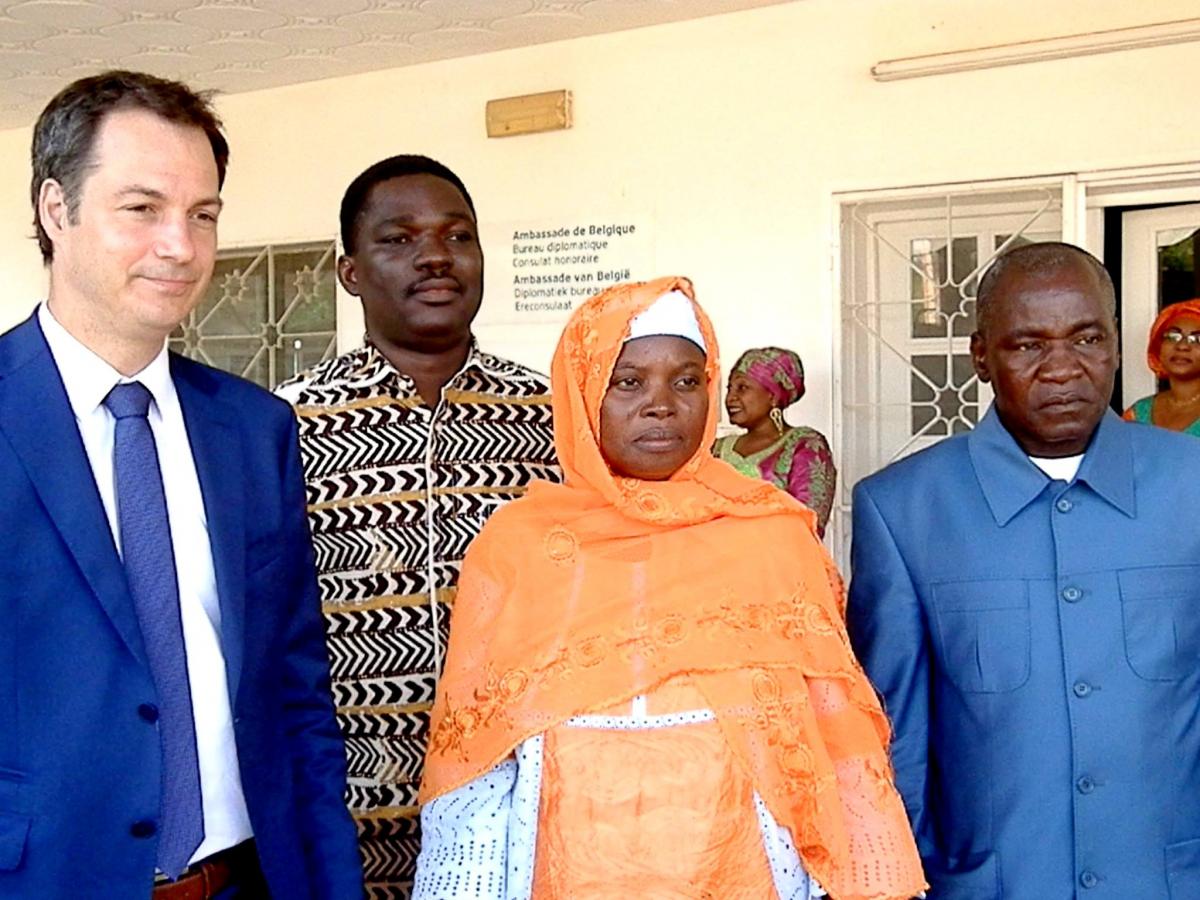
Signature d'un nouvel accord de coopération avec le Niger
Stephanie EECKMAN | 25/08/2016
Le 23 juin dernier, le Vice-Premier Ministre et Ministre de la Coopération au développement Alexander De Croo a visité le Niger. Le but de la visite du Ministre était la Commission Mixte du 22 juin, conclu par la signature du Programme de Coopération 2017-2020 entre les deux pays. Ce nouveau programme de coopération a été signé pour un montant de 33 millions qui s'étaleront sur quatre ans.. Dans ce programme, l'accent est mis sur deux secteurs. Les soins de santé: l'amélioration de l'accès à des soins de santé de première ligne de qualité via le développement d'un système de couverture universelle (14 millions d'euros). L'élevage et la sécurité alimentaire: l'amélioration de la sécurité alimentaire, de la résilience et des revenus des personnes actives dans l'élevage familial (14 millions d'euros). En outre, une enveloppe de 3 millions d'euros sera affectée au renforcement des capacités. La Coopération belge au développement soutiendra également un projet du Fonds des Nations Unies pour la population (FNUAP) qui lutte contre les mariages d'enfants et les grossesses précoces (2 millions d'euros).Avec cette signature, neufs mois de travail de préparation ont connu leur fin. Un nouveau chapitre s’ouvre avec les formulations des deux programmes pour lesquelles les préparations sont déjà en cours, et le démarrage effectif de la mise en œuvre dès 2017. Pendant la visite du Ministre, un petit déjeuner à été organisé aux "one roof" du bureau diplomatique et de la CTB, Nos collègues et partenaires du Programme d’Appui à la Mise en Place des Entités Décentralisés dans la région de Dosso (PAMED2) ont témoignés et échangés avec le Ministre sur la décentralisation et les défis de gouvernance locale et la sécurité alimentaire dans la région de Dosso. L’on peut dire que le Ministre a été séduit par le potentiel d’un tel appui pour améliorer les conditions de vie des Nigériens et Nigériennes. La rencontre avec Mme Hadabi Haoua Bizo et Mr Oumarou Chérif, les maires des communes de Kiéché et Douméga respectivement, a eu un impact particulier sur la visite du Ministre. Kiéché et Douméga font partie des douze communes au Niger qui bénéficient de l’appui du Programme d’Appui à la Mise en Place des Entités Décentralisés dans la région de Dosso (PAMED2) qui a pour but de soutenir les responsables à mieux gérer leur commune de façon transparente, à dialoguer avec la population, à trouver des solutions à leurs principaux problèmes. Lors de cette rencontre, les maires ont partagé leurs expériences avec le PAMED2 et ont stressé l’importance et l’impact du soutien de la coopération belge. « Traditionnellement » a expliqué Hadabi Haoua Bizo « à Kiéché, on cultive le mil, mais ces dernières années, on à eu des récoltes décevantes. Mais on se rend compte que si on produit des tomates ou des oignons, on peut gagner plus d’argent. Alors, avec l'appui du programme on arrive à amménager des sites maraîchers et on conseille les producteurs. Il y avait aussi un problème d’accès aux aliments dans les mois qui précèdent les nouvelles récoltes, les greniers étaient vides et la nourriture hors de prix. Avec l’aide belge, nous avons construit une banque céréalière qui fournit des vivres à un prix abordable. Et en plus de ça, on a soutenu plusieurs activités génératrices de revenu. Par exemple, les femmes les plus vulnérables reçoivent trois chèvres et un bouc, qu’elles «remboursent» lorsque leur élevage est bien lancé. Et comme nos administrés voient ce qu’on fait avec l’argent, le leur et celui qui est fourni par les impôts payés par les citoyens belges, ils sont plus enclins à payer leurs taxes ! La faim recule, et les jeunes retrouvent l’espoir, ce qui freine leur exode ».
